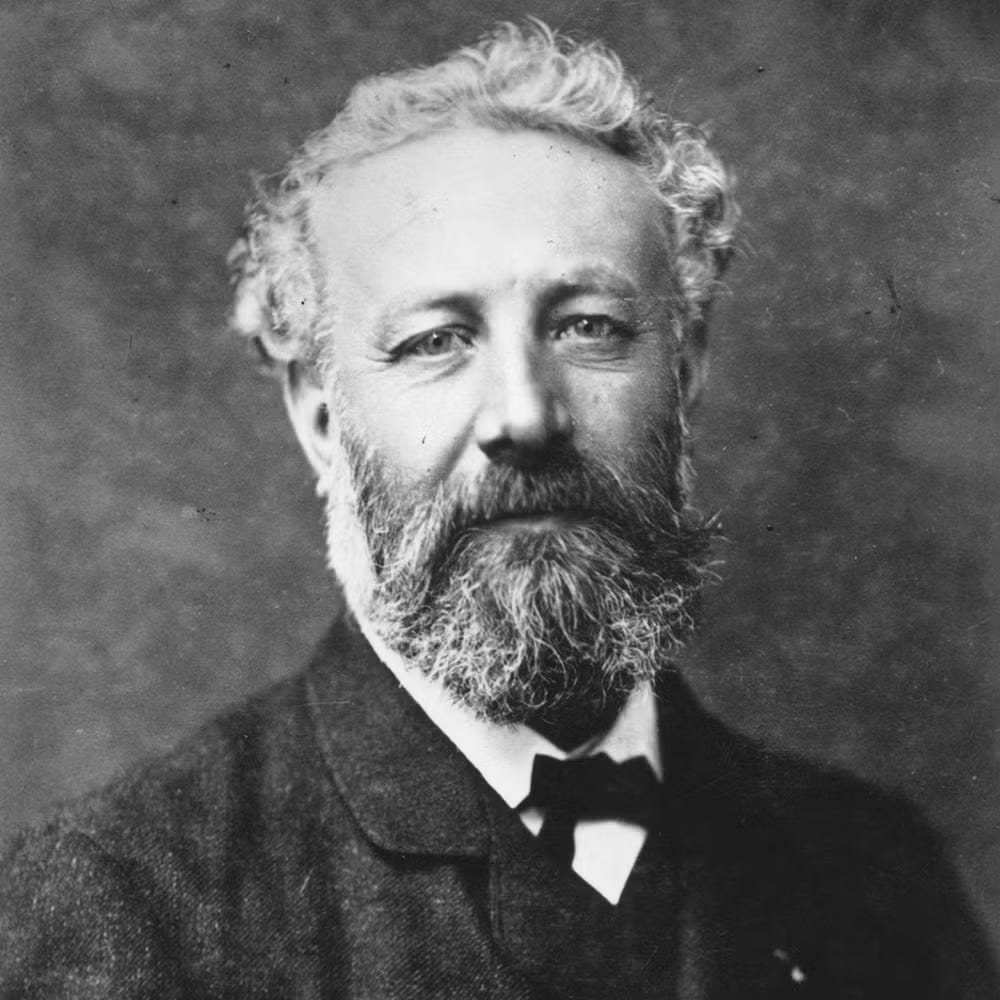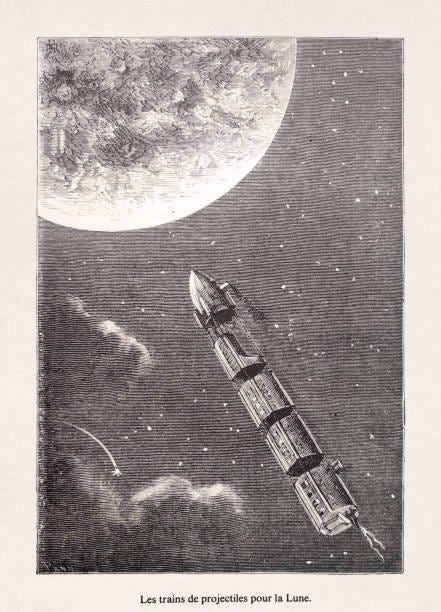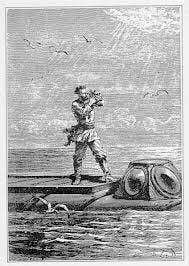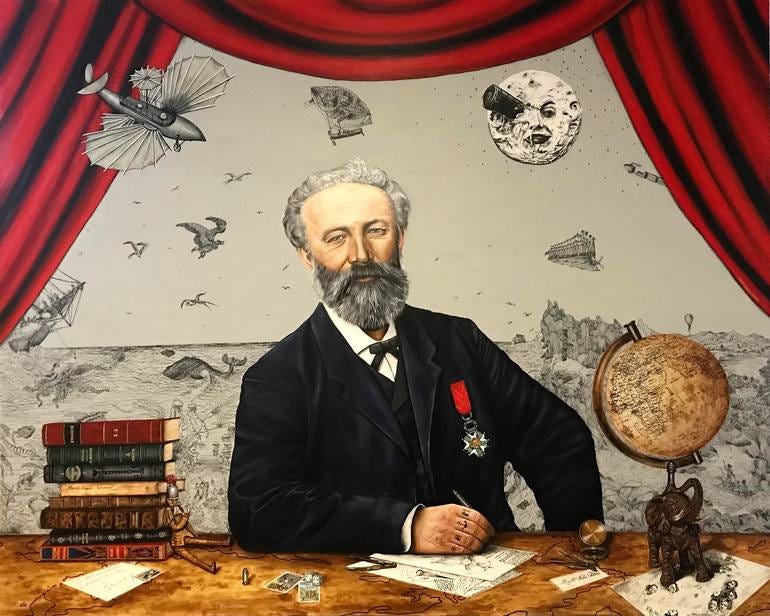There are writers, and then there are visionaries—those rare minds who don’t just tell stories but shape the way we think about the world. Jules Verne was one of those minds. More than a century after his time, his name still resonates not only with lovers of adventure and science fiction but also with scientists, explorers, and inventors who grew up inspired by his work.
Born in 1828 in Nantes, France, Verne lived in a world where steam engines were at the height of technological innovation, and electricity was still a mysterious force. And yet, his books imagined submarines that could travel for months underwater, rockets that could take men to the Moon, and a future where cities were illuminated by artificial light and connected by high-speed transport.
Unlike many writers of his era, Verne didn’t simply invent fantastical worlds for the sake of escapism. He grounded his fiction in science and engineering, blending adventure with an almost obsessive attention to technological possibility. His stories were less about magic and more about what might be possible if human ingenuity pushed the limits of the known world. In doing so, he became one of the most eerily prophetic writers in history, predicting major technological advances decades, sometimes a century, before they became reality.
A 19th-century mind with a 21st-century vision
Jules Verne was not a scientist, but he was an insatiable researcher. He consumed books on geography, physics, astronomy, and engineering, often corresponding with experts of his time to ensure his fictional inventions felt plausible. He wasn’t just guessing at the future—he was extrapolating it, looking at the cutting-edge discoveries of his day and imagining where they might lead.
At the time Verne was writing, the idea of manned space travel, deep-sea exploration, or electric-powered vehicles seemed like sheer fantasy. And yet, in novel after novel, he described these things in remarkable detail—so much so that when modern scientists and engineers read his work, they’re often stunned by how much he got right.
Predicting the space age: "From the Earth to the Moon" (1865)
One of Verne’s most astonishingly accurate predictions came in From the Earth to the Moon, published in 1865. At the time, the idea of humans leaving Earth was pure speculation, yet Verne’s novel describes a manned mission to the Moon with details that closely mirror NASA’s Apollo program over a century later.
Consider these uncanny similarities:
Launch Site: Verne’s spacecraft, the Columbiad, is launched from Florida—just like the Apollo missions.
Crew Size: The Columbiad carries three astronauts, just like Apollo 11.
Weightlessness: Verne describes the sensation of floating in the cabin, long before we had any way to confirm how humans would behave in microgravity.
Splashdown Return: Instead of landing on solid ground, his fictional astronauts return to Earth by splashing down into the ocean—again, just like the Apollo missions.
In fact, when NASA engineers in the 20th century looked back at Verne’s work, they were stunned by his accuracy. Some details differed—Verne’s astronauts were launched by an enormous cannon rather than a rocket—but the fundamental vision was so close to reality that it’s impossible to ignore.
Inventing the submarine before it existed: "Twenty thousand leagues under the sea" (1870)
When Twenty Thousand Leagues Under the Sea was published in 1870, submarines were primitive, small vessels incapable of staying underwater for long periods. Yet Verne imagined the Nautilus, a fully electric-powered, self-sufficient submarine capable of deep-sea exploration.
His descriptions were strikingly ahead of their time:
Electric propulsion: The Nautilus runs on electricity—long before submarines were electrically powered.
Self-contained oxygen system: Verne imagined a system where Captain Nemo and his crew could extract oxygen from seawater, an idea modern submarines use today.
A streamlined metal hull: The sleek, steel design of the Nautilus is remarkably similar to modern nuclear submarines.
Verne’s work wasn’t just theoretical; it directly inspired real-world inventors. When Simon Lake, one of the pioneers of modern submarine technology, built his first functional sub, he openly admitted that Verne’s book had been his inspiration.
A lost novel that Predicted the 21st century: "Paris in the twentieth century" (1863)
One of Verne’s most chillingly accurate works was actually lost for more than a century. Paris in the Twentieth Century was written in 1863 but was rejected by his publisher for being too bleak and unrealistic. The manuscript was forgotten until it was rediscovered in 1994—and when it was finally published, people were shocked by how much Verne had predicted correctly.
In this novel, Verne envisions a world of skyscrapers, automobiles, mass transit, electric lighting, and even something eerily close to the internet. He describes people communicating through a global network, cities filled with glass-and-steel buildings, and a society obsessed with technology and commerce.
The most remarkable part? He imagined all of this over 150 years ago.
How did Jules Verne see the future?
How did a 19th-century writer manage to foresee so many of the technological advancements that would shape the modern world? Some might call it luck, but a closer look suggests that Verne’s predictions were the result of careful observation, scientific curiosity, and the ability to connect the dots between emerging technologies.
He didn’t just dream—he studied. He read the latest scientific journals, attended lectures, and absorbed the breakthroughs of his time. But unlike others, he took things a step further: he asked, "If this is possible now, what might be possible in fifty or a hundred years?"
That’s what separates a visionary from an ordinary thinker. Verne’s greatest gift wasn’t just imagination—it was his ability to see beyond the present and anticipate what was coming next.
Verne’s legacy: More than just science fiction
Many writers have imagined the future, but few have done so with the accuracy and influence of Jules Verne. His books inspired generations of scientists, engineers, and explorers—from Wernher von Braun, the father of modern rocketry, to Jacques Cousteau, the legendary oceanographer. His legacy isn’t just one of literature; it’s one of innovation.
Even today, as we push toward Mars, develop AI, and explore the deepest parts of the ocean, Verne’s vision still feels relevant. His work reminds us that the limits of today are the possibilities of tomorrow.
If Verne were alive now, what would he predict next? Would he imagine interstellar travel? AI-driven civilizations? New ways for humans to explore the universe? One thing is certain: whatever he would dream up, we’d probably see it come true a century from now.
Perhaps it’s time for a new generation of thinkers to pick up where he left off.









